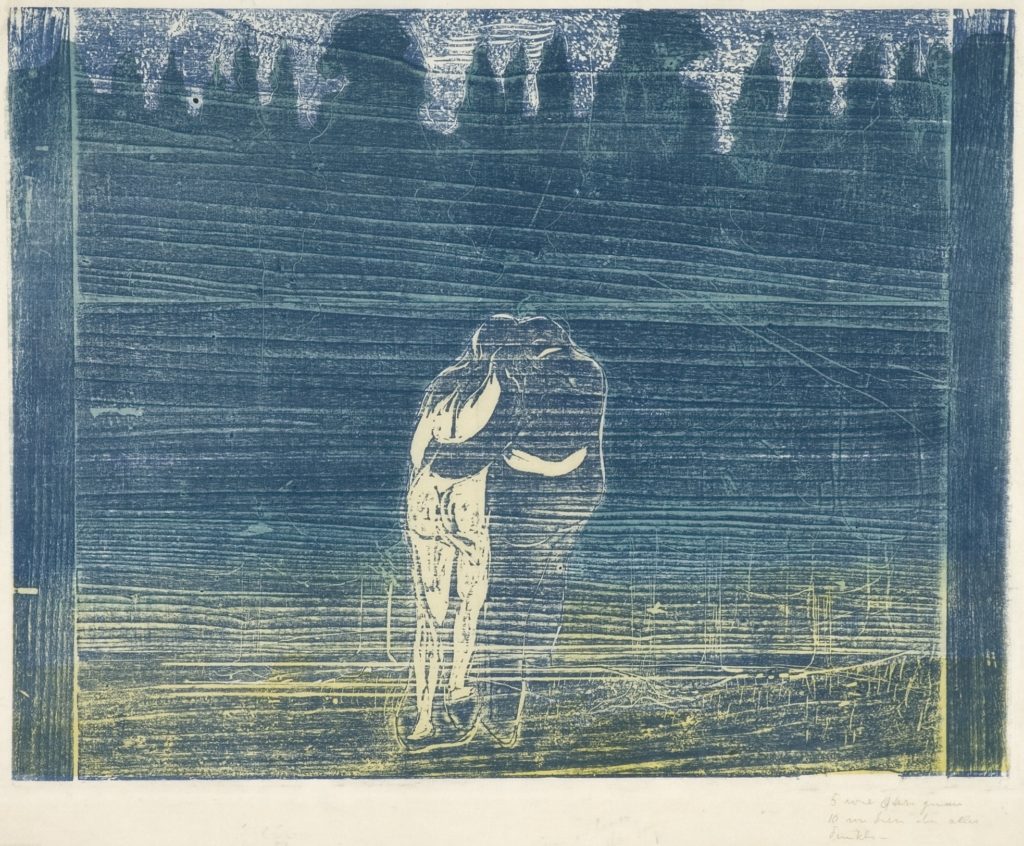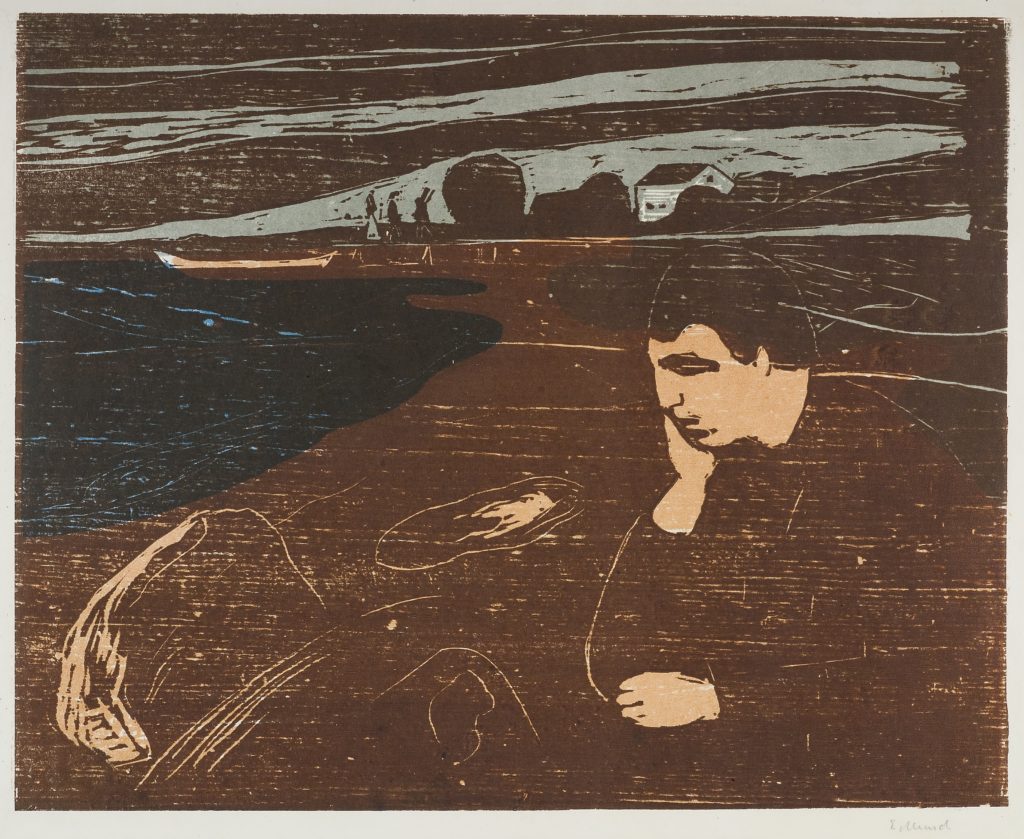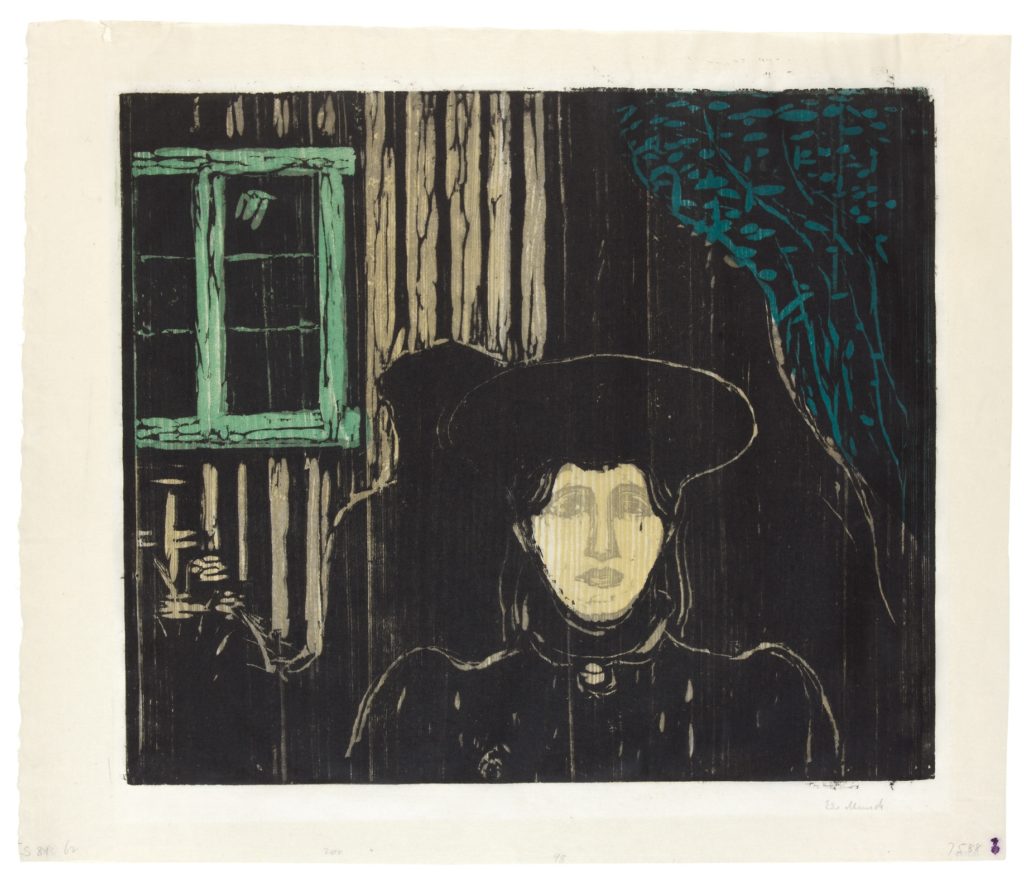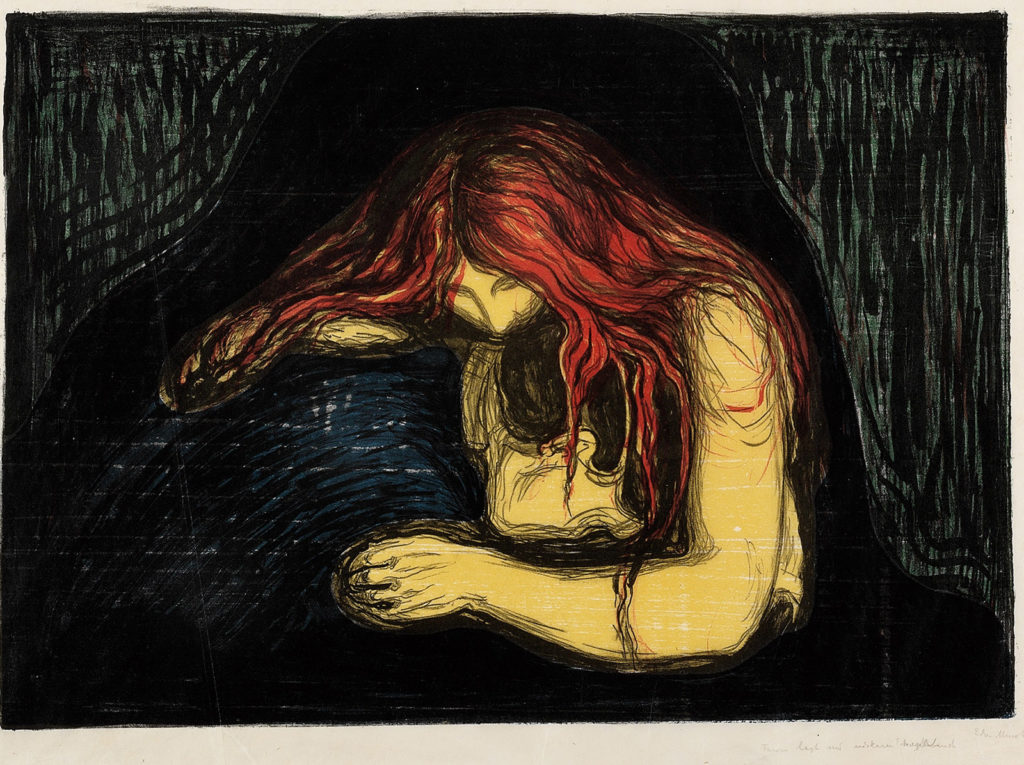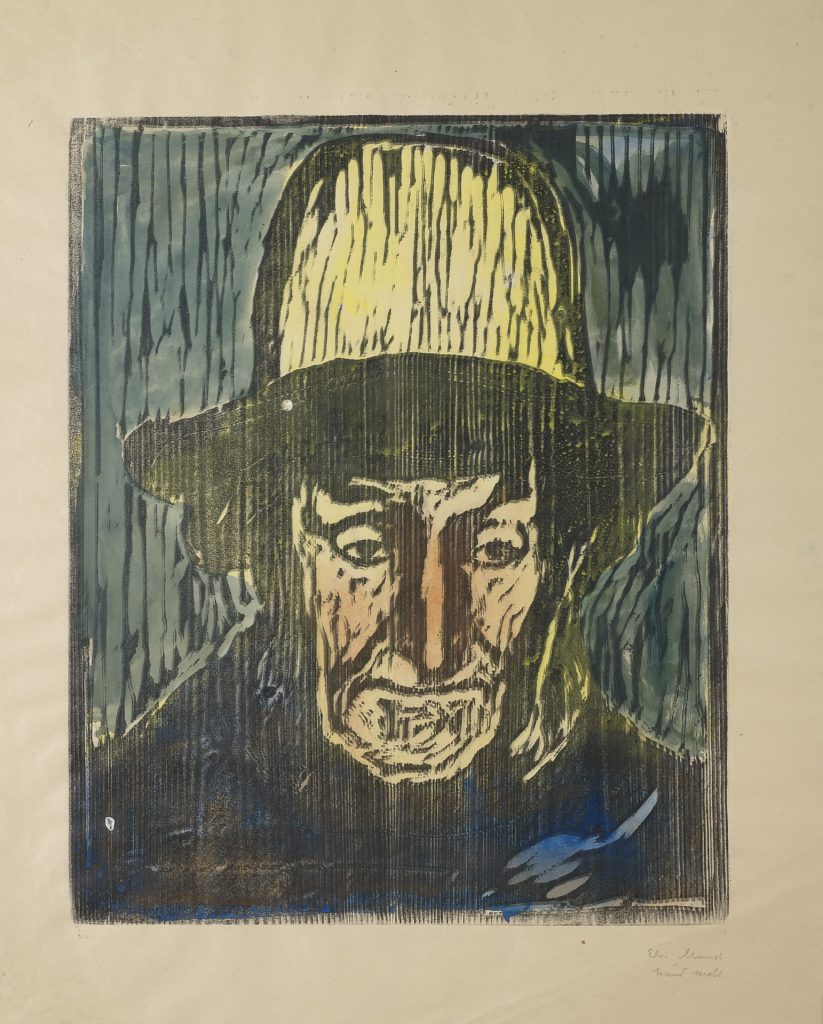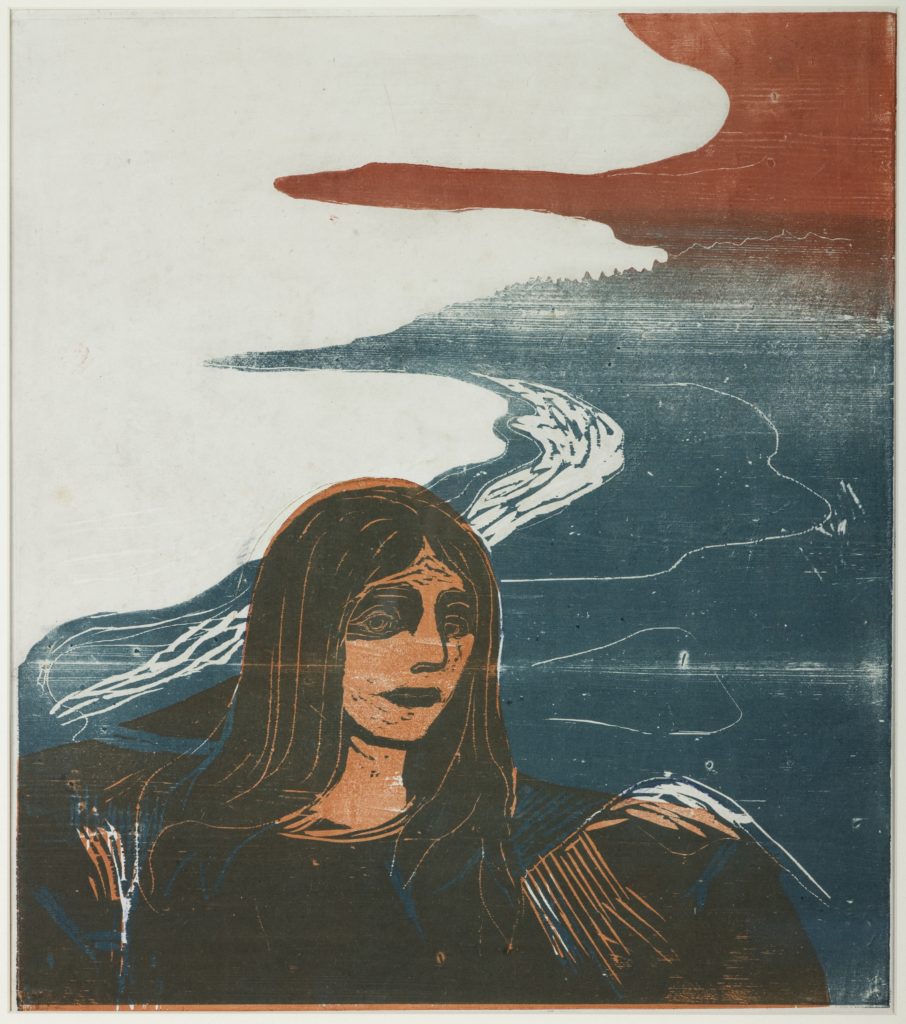Munch, Edvard
At the Sonderbund art exhibition in Cologne in 1912 Edvard Munch, not yet 50 years old, was celebrated as one of the founders of modern European painting. His significance as a pioneer and innovator was compared to masters such as Cezanne, van Gogh and Gauguin. The perception of Munch as one of the most important prerequisites and inspirational sources of 20th century visual art has in subsequent years been unequivocally confirmed in the annals of art history. It is primarily his graphic works and paintings from the 1890s – in particular the motifs that are included in the Frieze of Life – that have secured him his central position in art history.
Edvard Munch was born December 12th 1863 in Løten in Hedmark County, but the family soon moved to Kristiania (Oslo) where his father was appointed regimental doctor at Akershus Fortress the following year. The little family consisting of the parents Laura and Christian, and the siblings Edvard and Sofie, settled in the vicinity of the Fortress under rather poor conditions – where the three youngest children, Andreas, Laura and Inger, were born. In 1868, when Edvard was only five years old, his mother died of tuberculosis. This is how he rather gloomily described his family’s unfortunate health situation: “My mother came from peasant stock, a strong-willed family, but one whose roots were worm-eaten by the bug of consumption.” His mother’s sister, Karen Bjølstad, took over management of the household and the rearing of the children, and she would become an invaluable support in Edvard’s life. In 1877 the family was once again struck by tragedy when the eldest sister Sofie also died of tuberculosis.
In 1880, when Munch was 17 years old, he would make the most momentous decision of his life: “My decision now is precisely to become a painter.” These were prophetic words. During the subsequent years he studied at the Royal School of Art and Design in Oslo, he received critique by one of the leading Norwegian painters of the time Christian Krohg, and in 1885 he was awarded his first travel grant and departed resolutely for Paris. There he saw the historical art collections at the Louvre and gained impulses from contemporary art at the Paris Salon. Munch received the Government Scholarship for Artists for three consecutive years, from 1889 to 1891, which again provided him with the means to travel and become acquainted with the most advanced European art.
In the beginning of the 1890s Munch began to work on the series of motifs that would later be named the Frieze of Life. Some of these pictures were shown at the so-called “Scandal exhibition” at the art association in Berlin (Verein Berliner Künstler) in 1892. After a great upheaval the exhibition was closed down after barely a week, and Munch became a “hot” name in the German art world overnight. During this time he had also entered into the circle of artists and writers associated with the pub called Zum schwarzen Ferkel, which was not unlike the bohemian milieu in Kristiania. Ten years after the “Scandal exhibition,” in 1902, the Frieze of Life was exhibited at Berlin Secession. This time Munch experienced widespread artistic recognition and considerable financial success.
A hectic and itinerant life marked by constant travelling and excessive alcohol consumption eventually wore him down and culminated in Munch’s allowing himself to be admitted to Dr. Jacobson’s Nerve Clinic in Copenhagen in 1909. After eight months he was released and Munch decided to return to Norway and settle there. He first stayed in Kragerø and Hvitsten before ending up at Ekely in Oslo, in 1916, where he spent the rest of his life. Munch lived a rather reclusive life at Ekely and had less and less contact with friends and family as time passed. His travelling activity also dwindled but between 1920 and 1922 he visited Berlin, Paris and Zurich, and in 1926-27 he again made trips to several European cities. In 1927 extensive retrospective exhibitions of Edvard Munch’s work were mounted in both Berlin and Oslo. And on his 70th birthday in 1933 he was awarded the Royal Norwegian Order of the Grand Cross of St. Olav. During the winter of 1943-44 Edvard Munch came down with pneumonia and he died peacefully at Ekely on January 23rd 1944 80 years old.
OWG
